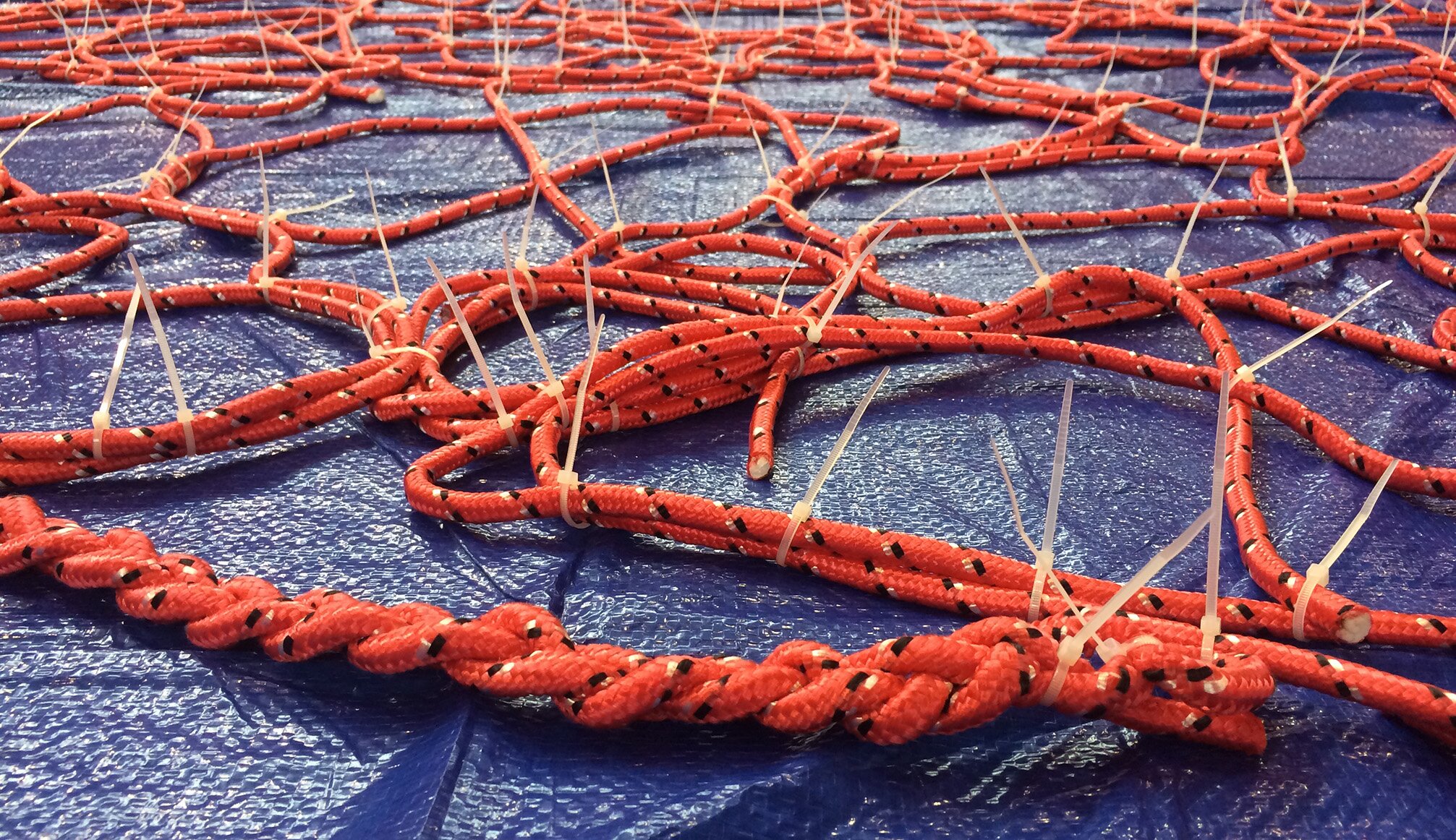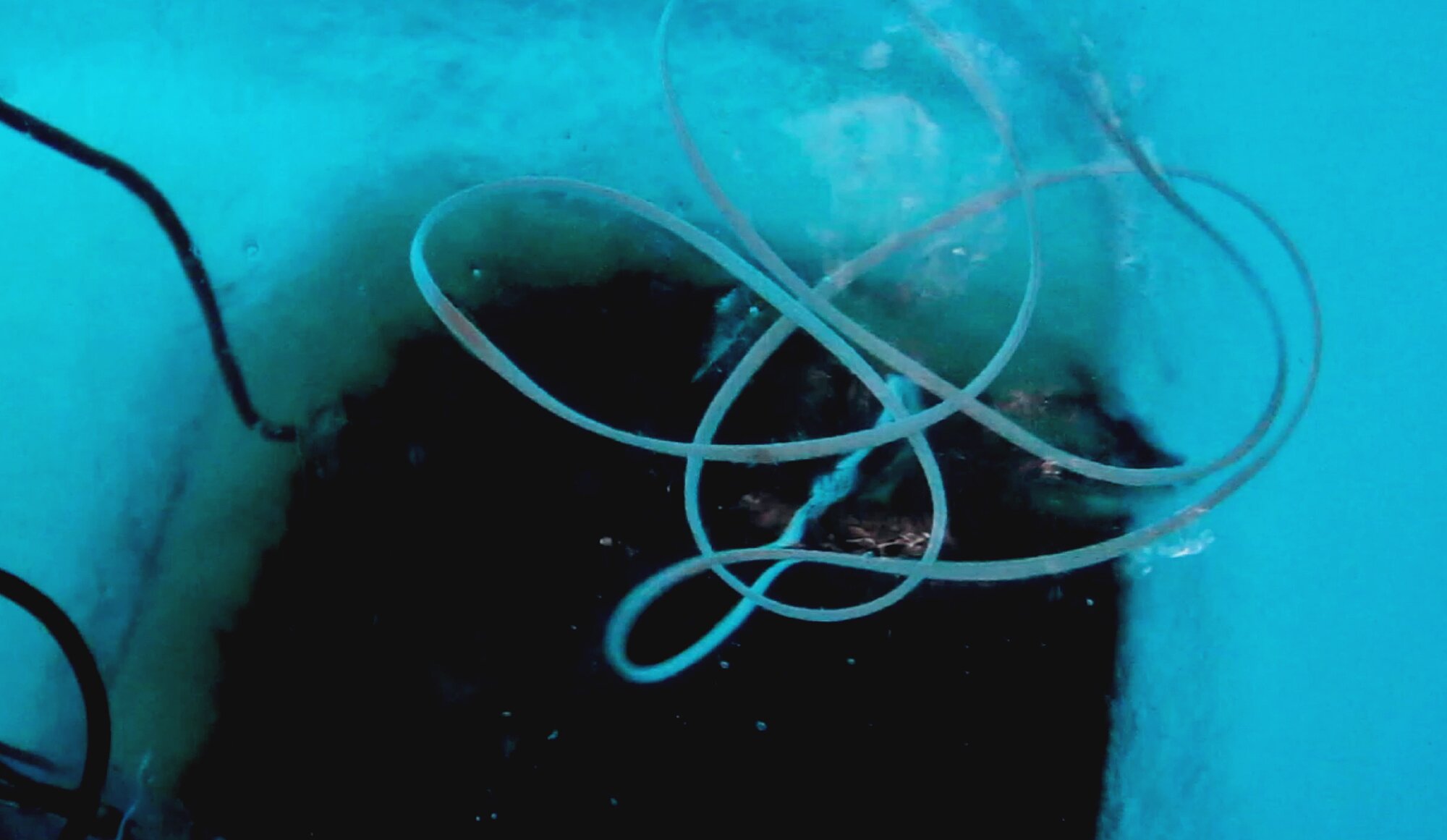Drawing Water
16th March – 8th April 2017
HUB ONE
Corban Estate Arts Centre
Thursdays – Sundays
11am – 4pm
Drawing Water
In Drawing Water students around the country are learning directly from the experts about the ocean’s complex systems.
At °TEMP you will see an gigantic drawing made from rope prepared and shaped by students from across New Zealand. The Draw Water installation will cover an acre of grounds at Corban Estate to focus interest in learning about the complex oceanic systems and the effect of climate warming on global currents and patterns.
A recent interview with Gabby O’Connor working with students can be viewed on TVNZ one news
In Drawing Water young students around the country are getting the opportunity to learn directly from the experts about how to embrace all the complexities of our oceans. Led by artist Gabby O’Connor, in partnership with long-time collaborator NIWA/UniAuckland marine scientist Dr Craig Stevens, the students have been finding out about how art and science can connect. They then get to make their own connections by contributing to a giant exhibition about the ocean’s role in climate.
Connecting future thinking to the ocean is vital. While people naturally focus on the warming atmosphere, 90% of the heat being captured by the changing climate ends up in the ocean. O’Connor is using art to communicate these changes being wrought beneath the waves.
Team
Dr Craig Stevens is a physical oceanographer with a focus on environmental fluid mechanics in extreme environments. He holds a joint position at the University of Auckland and NIWA and is a Programme Leader in the Coasts and Oceans Centre. He uses novel observational techniques to make discoveries about how the ocean works – primarily around how turbulence, stratification and waves interact and how entities react/behave/exist in such fluid environments. He has held a number of Marsden Fund projects, is the Chair of the Aotearoa Wave and Tidal Energy Association and has a strong interest in promoting environmental physics to the public.
Gabby O’Connor has worked in the art/education space with a connection to Antarctic environmental science for the last decade. This has resulted in her having a national and international profile and includes being invited to produce the facade for IceFest 2014. She is a researcher in the NZARI-supported event (K131) and is looking to develop approaches to world-leading art-science investigation. The work is in collaboration with Craig Stevens (NIWA/UoA) to develop unique embedded art ideas in parallel with science investigation and use this as leverage to enhance educational outcomes in primary school age students. This is driven by a need to create work that translates how cultures engage with natural systems. This approach extends beyond polar scenarios to include work on the collaborative process (with Dr Shaun Hendy UoA). As well as being a practising artist with a gallery track-record, she runs workshops for children that equally translate to adults.


